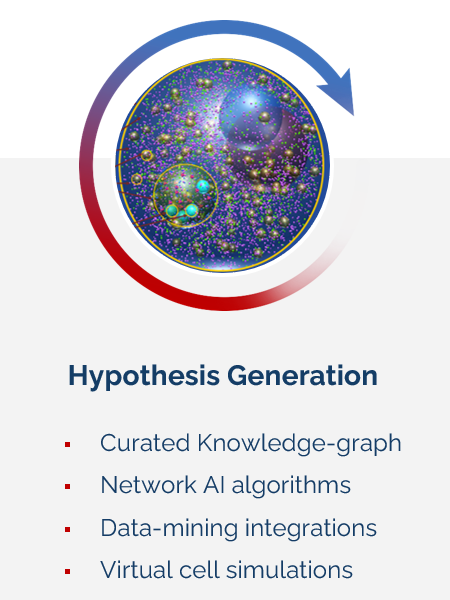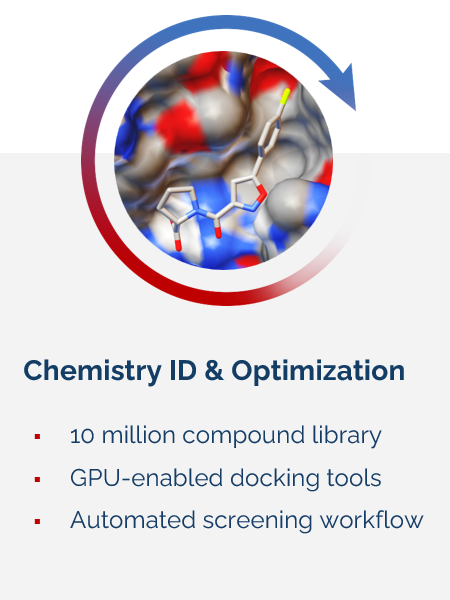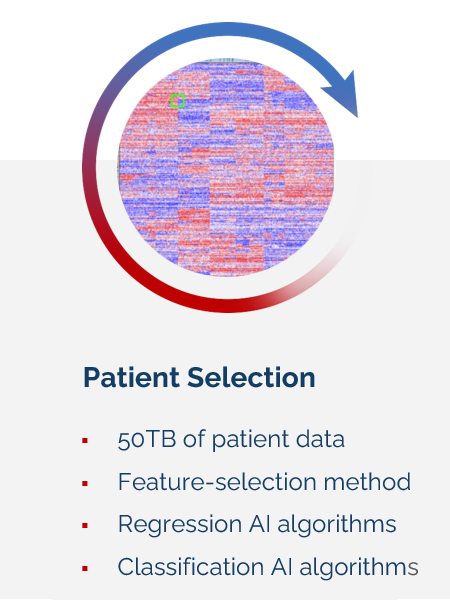Science Overview
Rationale for Mitochondria
Dysfunctional mitochondria can cause damage to cells and are a major hallmark of age-related disease. To slow the progression of aging and age-related diseases, we seek to accelerate the removal of damaged mitochondria by increasing the natural process of mitophagy.
By improving mitochondrial quality control, efficient energy production is restored and helps return the cell to its normal state of homeostasis.
Rationale for Top Targets
To maintain homeostasis, there are opposing forces in living cells. The signal for the removal of damaged mitochondria in cells is chains of ubiquitin found on the outer membrane of the mitochondria, which recruit the autophagic machinery, engulf the damaged mitochondria or portion, and take it to the lysosome for removal/recycling. The primary enzyme that opposes this ubiquitination process is USP30, a de-ubiquitinating enzyme located on the mitochondrial membrane, which removes ubiquitin chains and slows the repair and recycling mechanisms. By inhibiting or reducing USP30, we can enhance the mitophagy process, thereby reducing the amount of damaged mitochondria and resuming cellular health. Therefore, small molecules that can inhibit USP30 hold therapeutic potential for many diseases that involve mitochondrial dysfunction.
Parkin is the “yin” to USP30’s “yang”. It is an E3 ligase that adds ubiquitin chains onto the damaged mitochondria to initiate its repair or recycling. Mutations in the parkin gene render it dysfunctional and cause early onset Parkinson’s disease in humans, suggesting this enzyme is key for keeping susceptible cells healthy. Accordingly, increasing levels of parkin protects against disease in several animal species and human cells. Similarly to USP30, enhancing parkin function therefore holds therapeutic potential for many diseases that are affected by mitochondrial dysfunction.
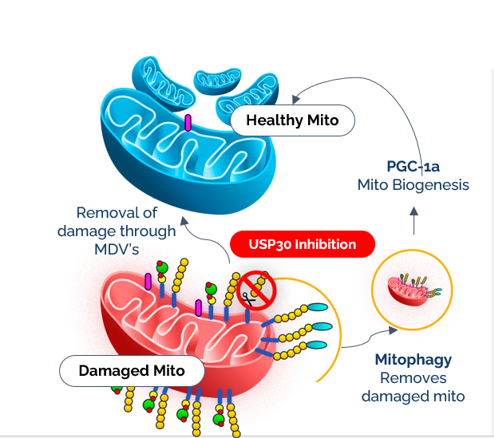
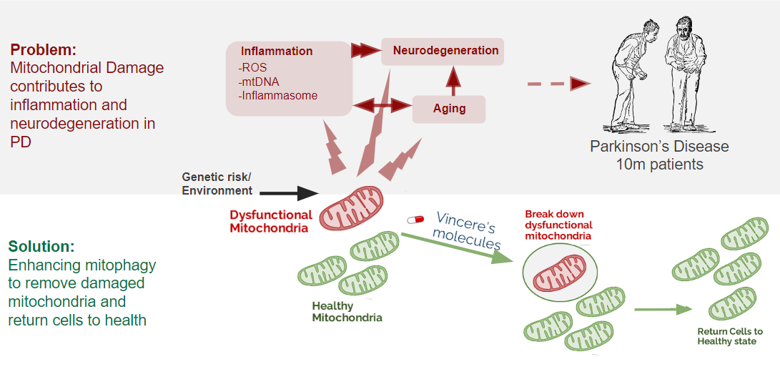
Therapeutic Area – Parkinson’s Disease:
There are four pillars of evidence that suggest mitophagy enhancers will provide therapeutic benefit in Parksinon’s disease (PD):
- Human genetics strongly implicates this pathway in a cause-and-effect manner for PD. Multiple genetic mutations in the mitophagy pathway cause early onset Mendelian forms of PD, including mutations in parkin, pink1, FBXo7, DJ1, PLA2G6, and VPS13. Other genetic mutations and risk factors such as those in LRRK2, α-synuclein, VPS35, and GBA also alter mitochondrial health and lead to dysfunctional mitochondria.
- In patients with sporadic PD of unknown cause, mitochondrial function can be shown to be compromised in a variety of tissues, including fibroblasts (or iPSCs) and blood. In post-mortem brains of patients with PD, there is an accumulation of dysfunctional mitochondria alongside degeneration and protein aggregation.
- Animal models have repeatedly suggested that enhancing mitophagy can protect against neurodegeneration and inflammation.
- Our simulation of multi-omics data from the cells that degenerate in PD brains suggest that enhancing mitophagy specifically through the inhibition of USP30 or activation of parkin can overcome the mitophagy deficits in these cells. Together this data suggests that we must urgently test mitophagy enhancing molecules in patients suffering from this debilitating condition. Unfortunately, there are currently no clinical trials aimed at directly enhancing mitophagy for PD.
Other Therapeutic Areas:
Not surprisingly, mitochondria are important for energetically demanding organs outside the brain including the heart, kidney, and muscle.
Multiple studies have demonstrated that reduced mitophagy exacerbates the degree of acute kidney disease (AKI) and that in turn, enhanced mitophagy protects against different forms of AKI. Furthermore, the expression of proteins important to mitochondrial dynamics are altered in human chronic kidney disease (CKD). Therapeutics that can increase mitophagy have the potential to both reduce damage during AKI and stop the progression to CKD.
The heart contains the highest mitochondrial content of any tissue, making it the most metabolically active organ in the body, with mitochondria comprising ~30% of cell volume in mammalian species. Dysregulation of mitophagy in the heart causes accumulation of dysfunctional mitochondria, loss of myocytes, and contractile dysfunction. Data suggests that increasing mitophagy has the potential to both act as a preventative for cardiac aging and reduce damage following cardiac injury such as myocardial infarction.
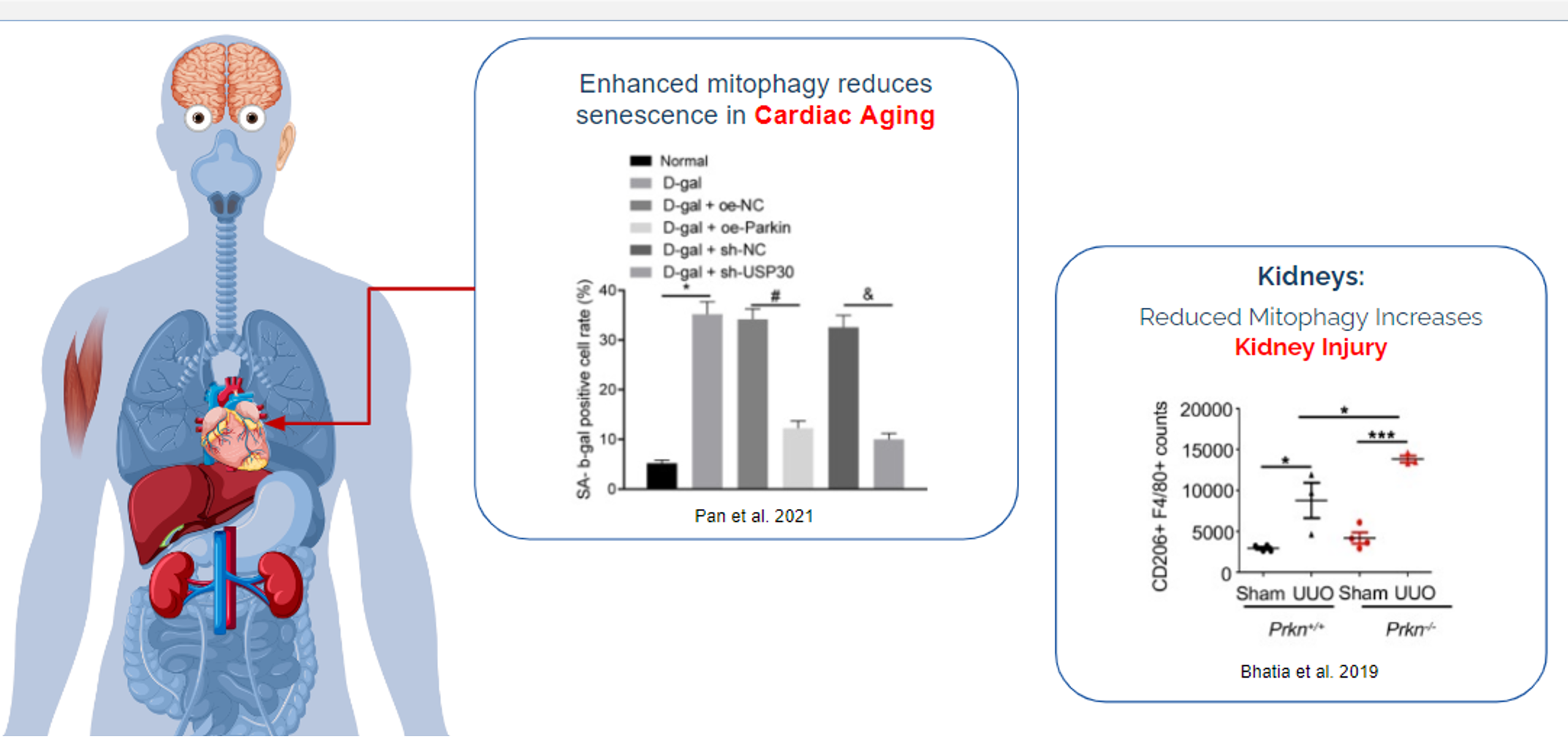
Technology Platform Powers Repeatable Invention
